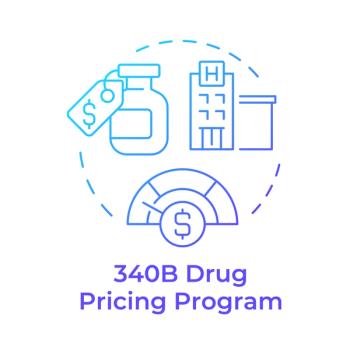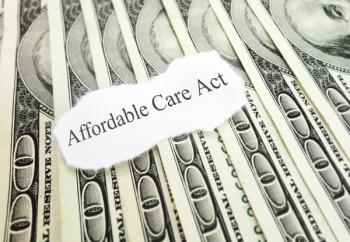
- MHE January 2021
- Volume 31
- Issue 1
New state copay accumulator laws complicate the coupon compliance landscape
States are moving to curb copay accumulators as federal government pulls back from regulation.
In recent years, the federal and state legal requirements governing drug distribution and reimbursement have become increasingly discordant. This has stemmed in part from a politically divided Congress, which has made it difficult to pass comprehensive federal legislation, and the fact that many states have pioneered ahead with ambitious reforms. It also stems from the differing incentives and concerns facing federal and state lawmakers. While the federal government is the sole funder of Medicare and a large portion of Medicaid, and therefore acts primarily as a payer, state governments regulate insurance on the local level and are more susceptible to the influences of patients and prescribers.
Related:
This federal-state dynamic has become especially pronounced with regard to the copay coupons promoted by drug manufacturers and the copay accumulator and maximizer programs that health plans and pharmacy benefit managers (PBMs) have employed to mitigate the negative effects that coupons can have on their costs. On the one hand, coupons are prohibited under federal healthcare programs,[1] but the U.S. government has afforded plans significant leeway to implement accumulators and maximizers.
At the same time, coupons are generally permitted at the state level, but a growing number of states have quietly passed laws prohibiting fully insured plans from using accumulators and maximizers. As a result, the industry battle between drug manufacturers and payers continues to play out over an increasingly complicated and inconsistent compliance landscape.
The conflict over copay coupons
Drug copay coupons, which may be used to reduce patients’ out-of-pocket costs, are used by drug manufacturers to promote access to branded drugs. By 2015, drug manufacturers were offering coupons to boost sales for more than 700 branded drug products, and manufacturers are estimated to have provided approximately $13 billion in copay coupons in 2018.
State legislatures have, understandably, struggled with the role that copay coupons play in healthcare because they present difficult trade-offs. Providers and patient advocacy groups have fiercely defended coupons as essential to facilitating access to expensive drugs, especially for beneficiaries in high-deductible health plans. The countervailing argument from health plans and PBMs is that coupons are a marketing tool that can incentivize the use of higher cost therapies and lead to higher premiums. Several states have considered legislation that would curb coupon use, and California and Massachusetts have enacted laws that would restrict coupons in circumstances where generic alternatives are available.
Divergent rules, deepening controversy
As health plans, PBMs and employer group sponsors have increasingly employed copay accumulators and maximizer programs in recent years, the controversies associated with copay coupons have deepened. Under a copay accumulator program, the health plan prevents a copay coupon from counting against the beneficiary’s deductible or out-of-pocket maximum. Once the coupon’s value is exhausted, the beneficiary must cover the entire amount of their deductible before plan benefits are triggered. With copay maximizers, the plan increases a drug’s copay amount so that it approximates the copay coupon’s monthly value. The total value of the coupon is applied evenly throughout the benefit year but is not applied against the beneficiary’s cost-sharing obligations.
Health plans have embraced these new benefit designs as a means to reduce their financial liability by drawing from the value of the coupon and the beneficiary cost-sharing amounts before providing drug coverage. However, opponents have raised concerns that beneficiaries may lack adequate understanding of how these programs work and be surprised by having to pay high deductibles once their coupons are exhausted. Accumulators have been especially criticized for abruptly shifting a large portion of costs to beneficiaries. Maximizer programs, which have more varied and flexible designs, are often tailored to apportion costs in a more equitable manner among the plan, beneficiary and manufacturer. Nonetheless, accumulators and maximizers are alike in that they prevent the coupon from applying in some manner to the cost-sharing obligations.
In 2019, CMS issued a rule restricting the use of accumulators by health plans subject to the Patient Protection and Affordable Care Act’s essential health benefits rules. However, CMS subsequently reversed course by issuing a new rule in May 2020 that removed these restrictions to “enable issuers and group health plans to continue long-standing practices with regard to how and whether direct drug manufacturer support accrues toward an enrollees’ annual limitation on cost sharing.”
While the legal landscape for accumulators has become clearer at the federal level, it has gotten cloudier at the state level. Patient advocacy and provider groups have begun to have some success shaping state-level laws and policy regarding accumulators. In the past two years, bills have been introduced in close to 20 states that would affect accumulator programs, and five states — Arizona, Georgia, Illinois, Virginia and West Virginia — have enacted laws.
The state accumulator laws are largely alike in that they require plans to consider payments made by a beneficiary, or on behalf of a beneficiary, when calculating their overall contribution to any cost-sharing obligations.
A growing divide
So far there has been strong bipartisan support for accumulator restriction bills in state legislatures, indicating that a growing number of states will likely be considering and adopting these laws. This is testament to the power that patient and prescriber advocacy groups have had in influencing state lawmakers with stories about how patients can be disadvantaged, sometimes unexpectedly, by accumulators. By contrast, plan and PBM opposition to coupons and support for accumulators and maximizers have been based on more abstract arguments relating to the need to manage costs and promote economical prescribing practices.
If additional states join the ranks of those states restricting accumulator programs, then the place for coupons will be increasingly secure, at least with respect to beneficiaries covered under fully insured plans regulated under state insurance codes. In the meantime, a growing legal asymmetry is arising as health plans (particularly self-insured plans)
Looking forward, stakeholders should expect more uncertainty and fluctuation in the legal treatment of coupons and accumulators as well as in other areas impacting drug reimbursement and distribution. If commercial health plans and PBMs are restricted in their ability to use accumulators and maximizers to mitigate the effects of coupons, then some premiums may increase and formulary offerings may narrow. If this were to happen, some lawmakers may decide to reverse course by pulling back on the accumulator restrictions that have been put in place. On this and other matters concerning pharmaceutical pricing, reimbursement and distribution, applicable laws may continue to zig and zag with uneven cost-shifting effects for competing stakeholders.
John “Jack” Linehan is a member of the health care and life sciences practice group at the law firm Epstein Becker & Green.
Articles in this issue
almost 5 years ago
Eric Whitaker, M.D.- From Influences to Influenceralmost 5 years ago
Pandemic Takes M&A Activity on a Roller-Coaster Ridealmost 5 years ago
Will COVID-19 Wring Low-Value Healthcare out of the System?almost 5 years ago
For behavioral health, virtual becomes a reality through telehealthalmost 5 years ago
Telehealth is dialing up the dollarsalmost 5 years ago
A conversation with Kevin Ronneberg, M.D.almost 5 years ago
The race for new heart failure treatments heats upalmost 5 years ago
Lilly, UHG become research bedfellowsalmost 5 years ago
Biden equity leader emphasizes dataNewsletter
Get the latest industry news, event updates, and more from Managed healthcare Executive.






















































